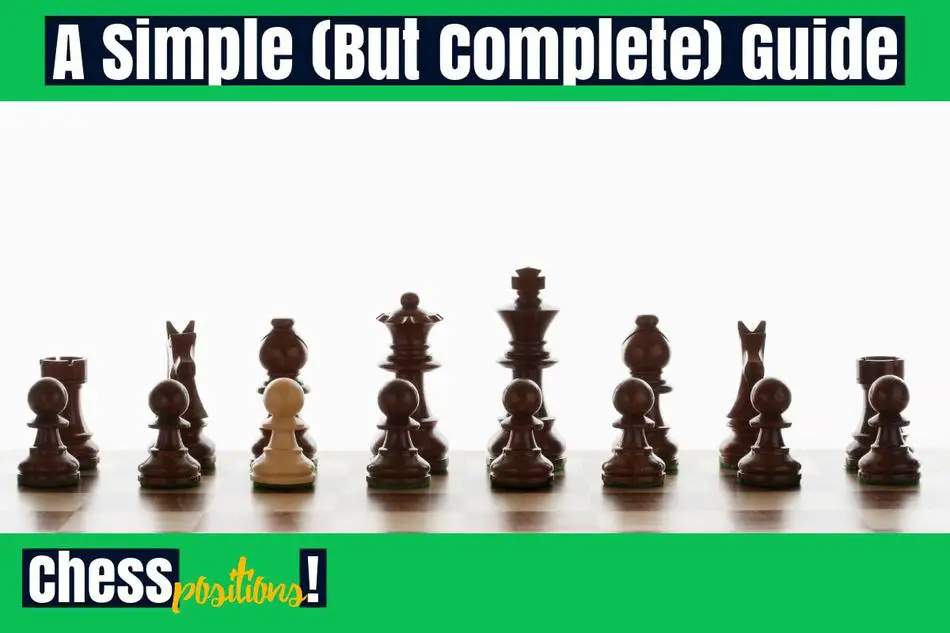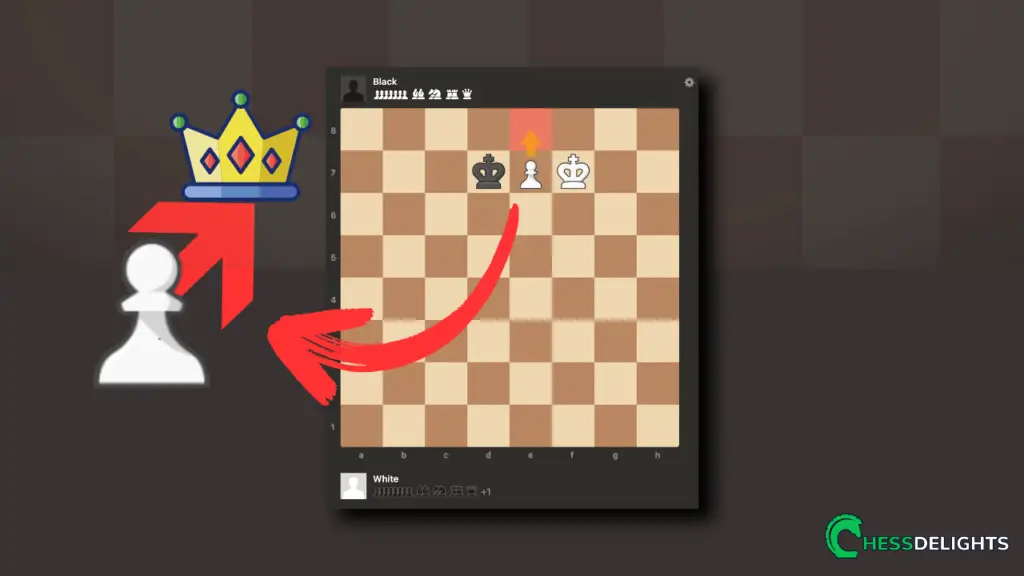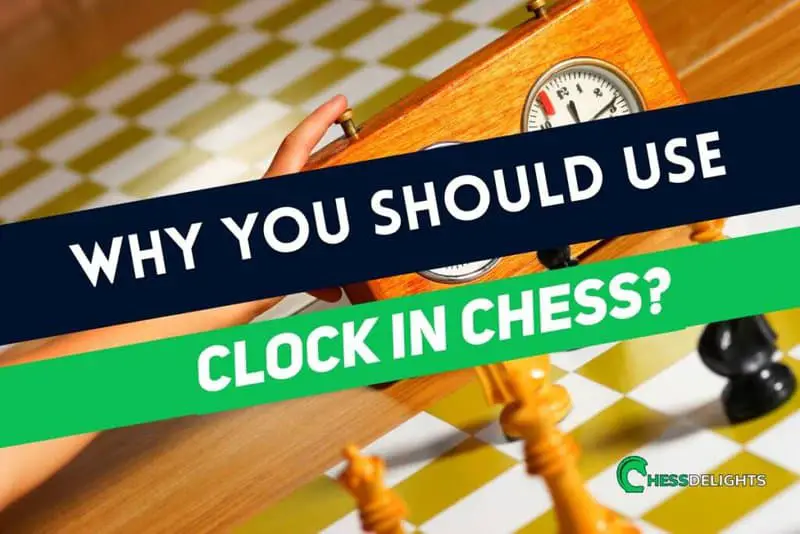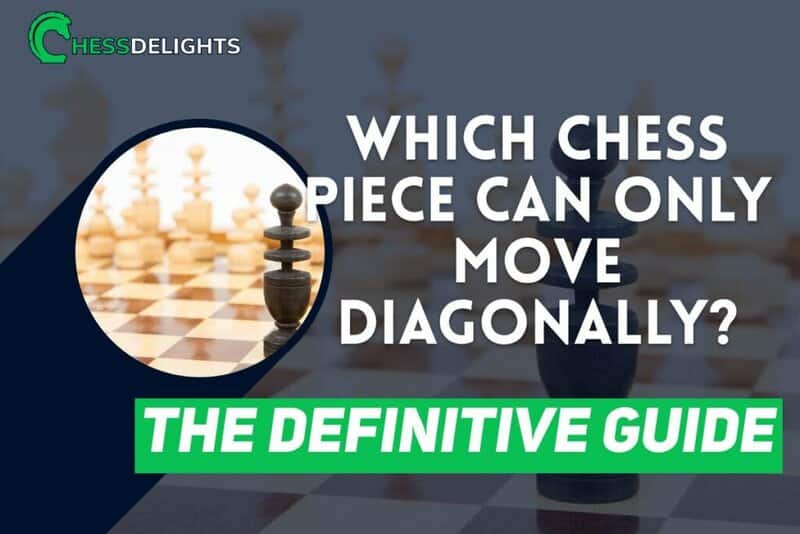When I started learning how to play chess, I was taught first to be familiar with the different pieces, their respective positions in the chessboard and their basic moves.
That is precisely what I teach my daughter when it comes to the chess pieces, positions, and its moves.
If you are a beginner, you also have to be familiar with some of their specialized moves and their “alternative” functions when you advance their moves in the game.
Chess is a game of strategy which requires critical thinking and enough skill, understanding, and mastery of all the moves and functions of each chess piece.
In this article, I will try to share a simple but complete guide about chess pieces (positions, as well as names, and its moves)
Here is a simple (but complete) guide for Chess Positions
No products found.
The Chessboard Layout With Names
First, you have to be familiar with the chessboard set-up. It is made up of 64 squares and each player—the White and the Black players—has 16 chess pieces.
At the beginning of each game, both players have 8 Pawns, 2 Rooks, 2 Knights, 2 Bishops, 1 Queen, and 1 King.
The chessboard has a designated name for each square.
The squares forming the horizontal part of the chessboard are named a to h. The squares forming the vertical parts of the chessboard are assigned 1 to 8.
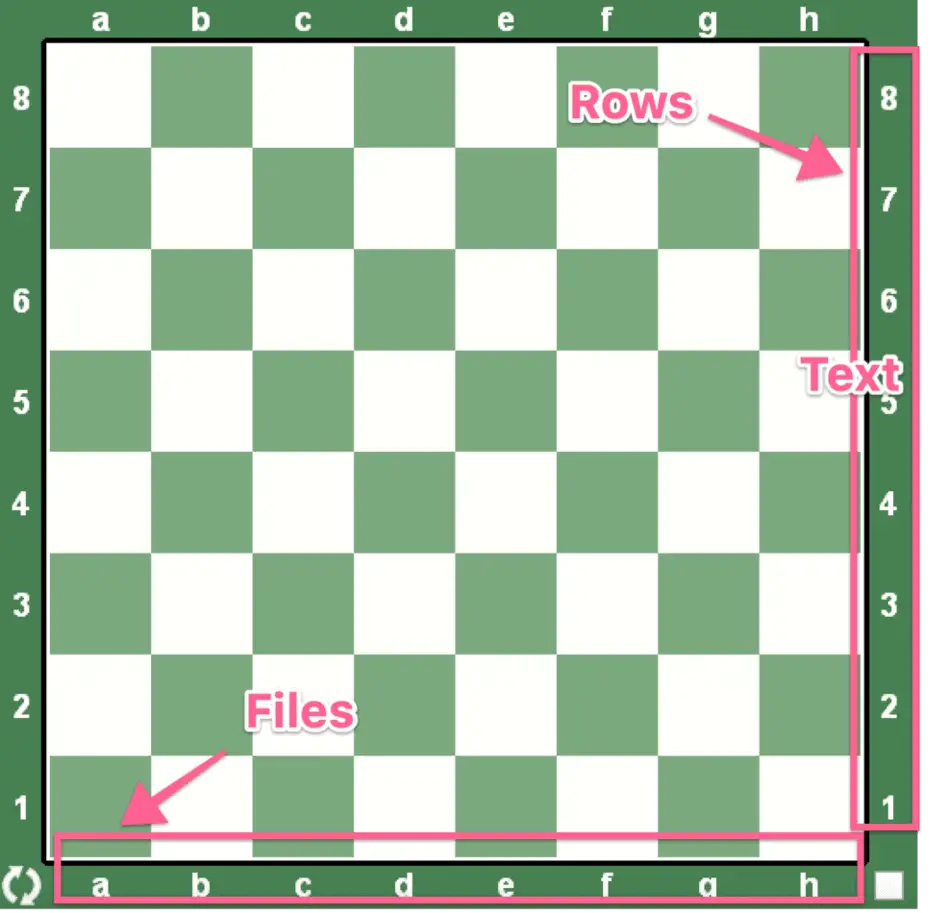

All eight pawns are positioned and lined up on the second set of squares, from a2 to h2 and a7 to h7, in front of each remaining chess pieces.
The Rook, the Bishop, the Knight, the Queen, and the King chess pieces are positioned behind the eight pawns, from a1 to h1.
The chessboard is also divided vertically into two: the Kingside and the Queenside.
The designated positions of your King and your Queen in both sides of the chessboard dictate and identify the roles of each chess piece to some extent. Study the sample diagram below.
Check out this article about the useful chess terms and chess moves

As you can see in the board above, the Kingside in the game is always found on the right side of the chessboard, while the Queenside is located on the left side.
This means that all other chess pieces on the right are named Kingside pieces, while those on the left are called Queenside pieces.
For example, the first four pawns on the right side are called the Kingside pawns, while those on the other side are the Queenside pawns.
Now let us look into each chess piece, their respective positions and basic moves in the game.
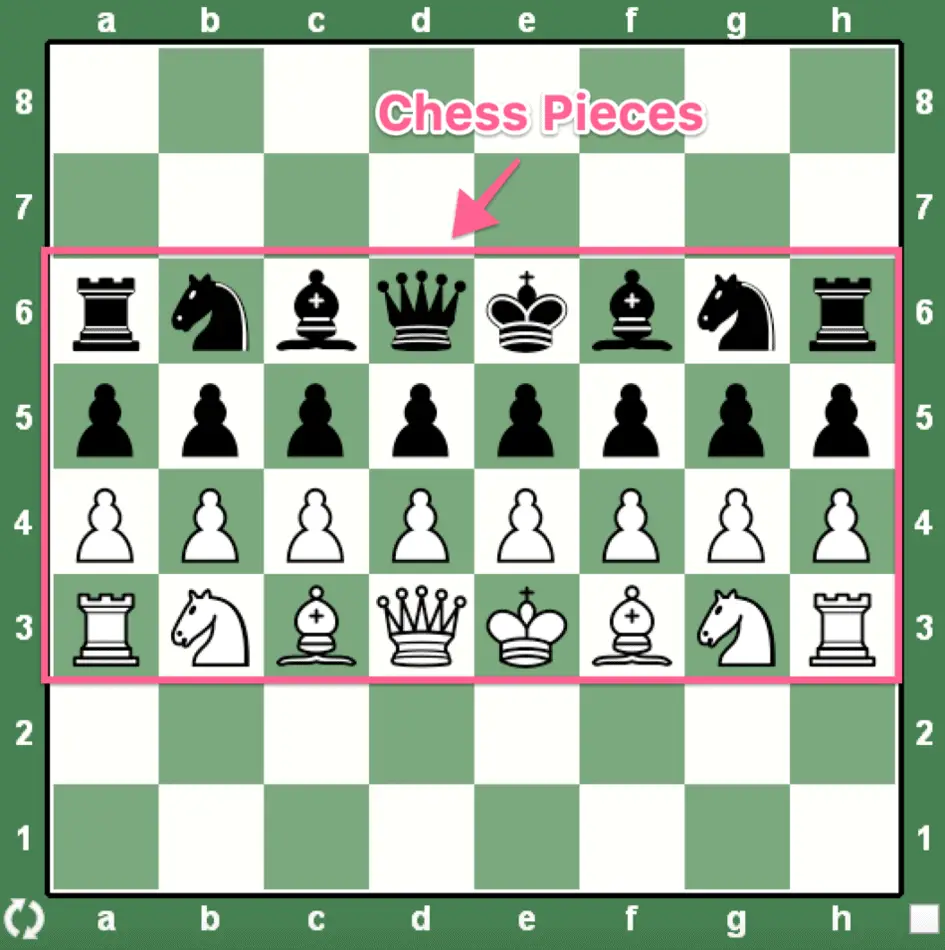
The Pawn (position and move)
You are assigned eight pawns at the start of every game.
You will notice that it is the smallest piece on the chessboard. They are usually the game starters, the first chess piece you would often move first to initiate the game.
Of course, this is not always the case, especially for advanced players who use other or stronger chess pieces to start the game.
It might be a common misconception and even an understatement for chess beginners to consider the pawn as a simple and weak chess piece.
Your battle line of pawns is both simple and complex when it comes to their functions and moves.
The Pawn on the Chessboard
Your pawn is more specialized and multi-functional than you think.
All eight pawns are named after the chess piece behind them in the first column on your side of the chessboard.
This means that, for example, the pawns in front of your two Knight pieces are called the Knight Pawns, and those in front of your King and Queen are called the King Pawn and Queen Pawn respectively.
You may like this interesting article about “how many chess openings you need to learn“
The Move of the Pawn
Each of your pawns moves forward one square at a time.
You can, however, move one of your pawns two squares directly forward only on the first move.
When you capture an enemy piece, your pawn moves one square diagonally forward.
One specialized function of your pawn is when you have successfully battled it forward at the end of the enemy side of the board, you can “trade” it for any piece except another King.
Most chess players would usually choose another Queen for their advantage.
The Rook (position and move)
The Rook is found on both ends of your chessboard (a1,h1 for White Player and a8h8 for the Black player).
It looks like a castle tower in most chess sets.
You start with two rook pieces. It is often known as the “straight” chess piece because of how it moves across the chessboard.
The Move of the Rook
When you move your Rook to battle, you step it up straight ahead, either forward or backward, or from side to side (left to right and vice versa).
It can move or “hop” anywhere across the board from 1 to 7 squares straight in any direction, as long as there is no intervening chess piece along the way.
There is a special move called castling, where you can move your Rook and King at the same time. This is a special move you can do to try to keep your King to safety.
The Knight (position and move)
The Knight is found both on the Kingside and Queenside (b1,g1 for White player and b8,g8 for Black Player) of your board in between the Rook and the Bishop.
Your Knight, as you can derive from its name, takes the shape of a horse, a defining symbol in historical battles where knights themselves rode on horses to attack their enemies.
It is often considered to be a unique chess piece on your board that you should use wisely.
Understanding the strategy behind using the Knight can help you keep your game to your advantage.
The Move of the Knight
The move of the Knight is exceptional and specific. It is the only piece that you can use to hop over other chess pieces. It moves following the shape of the uppercase “L.”
This means that you have to move it two squares forward or backward, or left or right, and then form a perpendicular move one square ahead, achieving the L-shape form.
This detailed move, on the other hand, makes the Knight limited to up to eight positions only across the board.
The Bishop (position and move)
The Bishop is placed both on the Kingside and Queenside (c1,f1 for White player and c8,f8 for the Black player) as well.
It is a tall and lean chess piece with certain curves, a pointed tip and a unique cut across the upper part.
Most beginners would consider this piece a much weaker one compared to the previous chess pieces because it can sometimes be accessible on the eye and vulnerable to enemy attacks.
However, the Bishop has its contribution to the game.
The Move of the Bishop
Each of your Bishop is placed on the opposite side of the board occupying different colors.
This means you have both a Queenside and Kingside Bishop placed on either the black or white square.
This color placement is vital because the move of your Bishop will depend on this. Your Bishop moves diagonally, either forward or backward across the board.
For one of your bishops placed in the white square, you must move it diagonally and use it to attack that is limited only in white squares.
The same goes for your other Bishop placed in the black square of your side of the chessboard.
The Queen (position and move)
The Queen's initial position in the chessboard is in d1 for White player and d8 for the Black player.
Your Queen is one of the tallest pieces on your board with a crown-like shape at the tip.
It is your most potent as well as the most delicate chess piece in the game for quite several reasons.
This is a piece you cannot easily afford to lose, especially early in the game.
The Move of the Queen
The move of your Queen is dynamic and all-around. Its power to attack most of the enemy pieces lies in its ability to move like the Rook and the Bishop combined.
This means that it can move straight ahead, forward or backward or from side to side just like the Rook.
It can also move diagonally in all directions similar to your Bishop as well.
Just take note that your Queen is always placed on the right of your King, and if it is placed on the white square, it must only move diagonally across the white squares of the chessboard.
The same rule also applies if your Queen is placed on the black square of the board.
This combined move makes the Queen powerful enough to capture any enemy piece in the game.
Also read this article about Can you have more than one queen in chess?
The King (position and move)
The King's initial position in the chessboard is in e1 for White player and e8 for the Black player.
Your King carries a cross symbol at its tip and is the tallest piece you have. It is your most prized possession in the game of chess.
The existence of your King keeps your game alive, and to maintain this status quo, you must protect your King at all costs.
If the enemy takes your King, then the game is over.
The Move of the King
Your King has limited moves, however. It can only move one square in all directions one time.
You also have to make sure that you don’t move your King to a position where an enemy piece can check it.
The King can be involved in a special move called castling together with the Rook.
You use this move to place your King to safety better and let your Rook join the ranks at the center of the board and battle the enemy pieces.
Read an article about the best strategy in castling
Wrapping Up
If you start following this simple guide above, you will be able to identify where to put your chess pieces on your chessboard.
Also, I added how the chess pieces move as well… 🙂
I hope this article was able to help you with your journey in learning how to play chess.
If you are teaching your kids about chess, you can use this as a guide as teaching material.
Please do share with your chess friends and family!
Have fun learning chess! 🙂
Do check out ChessDelights chess recommendations here.

